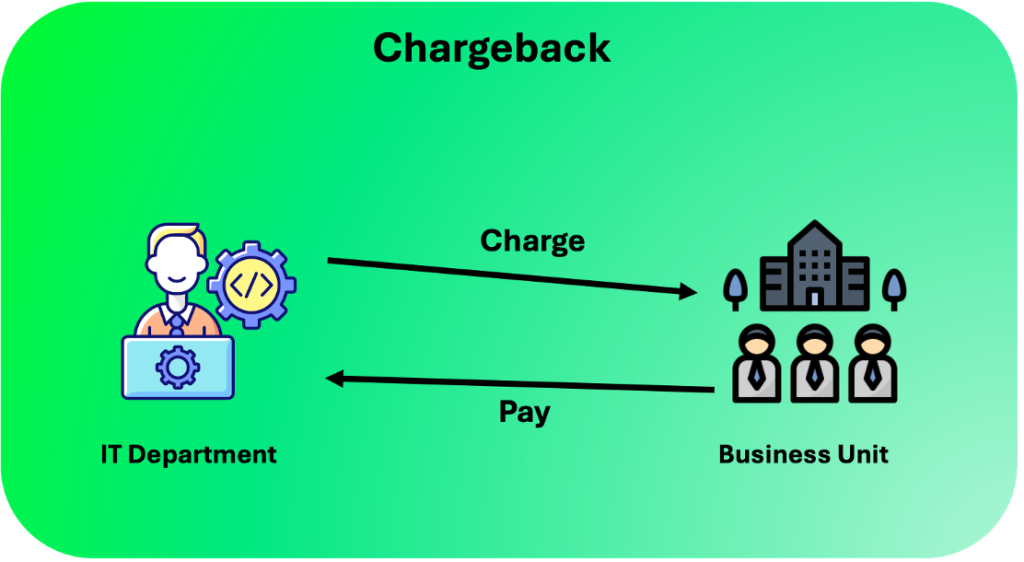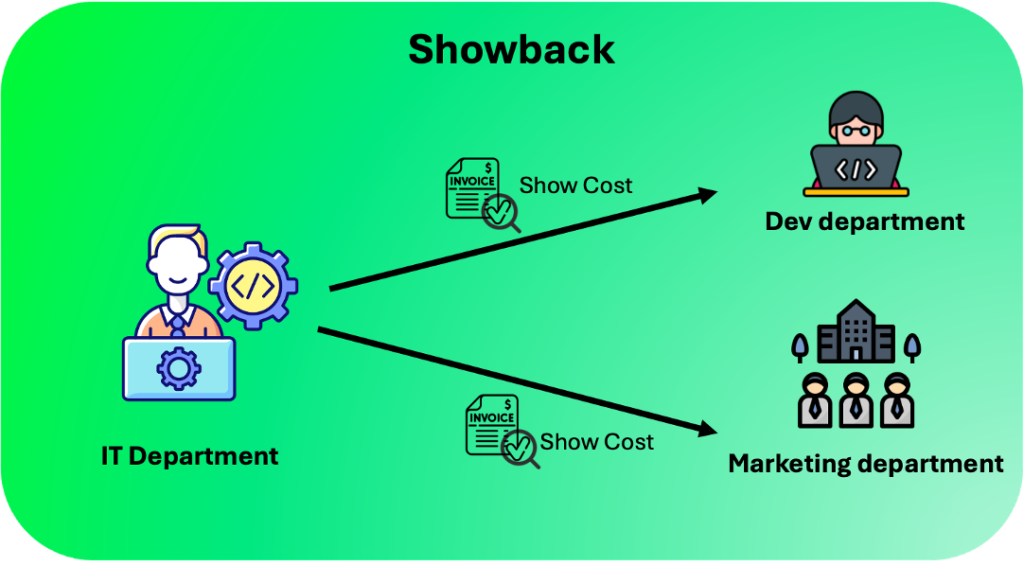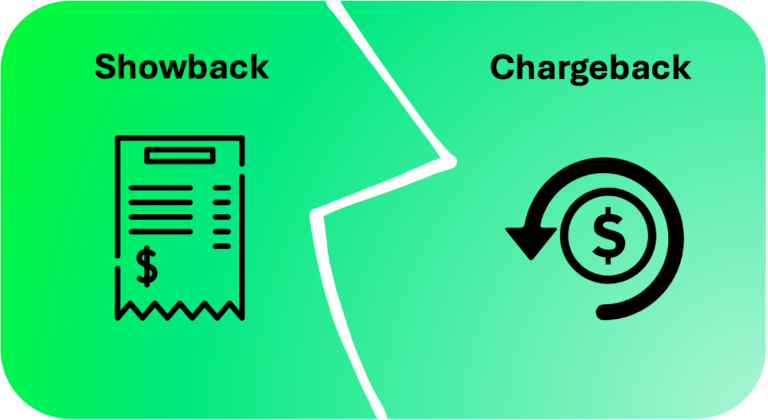As businesses increasingly migrate their operations to the cloud, managing cloud costs has become a crucial aspect of IT strategy. Two essential concepts in this context are cloud showback and cloud chargeback. Both mechanisms aim to allocate cloud costs accurately, but they do so in different ways, serving distinct purposes in an organization’s financial management and accountability structure.
Understanding IT Showback and Chargeback
- IT Showback: Here, the IT department provides detailed reports on cloud resource usage and associated costs to various business units. Showback reports are informational, aiming to raise awareness about cloud spending patterns within different departments. They help businesses understand how their cloud activities translate into costs, fostering collaboration between IT and business stakeholders.
- IT Chargeback: This goes a step further. Chargeback involves assigning actual cloud costs to specific business units based on their resource usage. Departments are then “charged” for their cloud spending, creating a sense of ownership and accountability. Chargeback can be implemented using various models, such as flat fees, usage-based pricing, or a combination of both. Successfully implementing chargeback requires careful planning and clear communication. Involving departments in the cost allocation model design fosters a sense of ownership and reduces potential friction. Setting transparent expectations, providing ongoing communication, and offering support throughout the process are crucial for a smooth transition and departmental buy-in.

Example of showback and chargeback
Imagine a company with a Marketing and a Development team using a cloud platform. An IT showback report reveals Marketing spends a lot on a cloud-based design tool, but also has a massive amount of unused storage for old marketing materials. Development, on the other hand, uses their development environments heavily, but keeps several running even when not actively working. This showback report, without assigning blame or cost, allows both teams to see potential for cost savings. Marketing could archive old materials, and Development could shut down idle environments, leading to a more efficient and cost-effective cloud setup.

In a chargeback scenario, the design tool bill wouldn’t just show the Marketing department their usage; it would hit their budget directly. This financial sting would motivate them to find ways to cut costs. They might archive unused design assets or even explore switching to a more affordable tool. Similarly, Development wouldn’t just see their high usage of development environments reflected in a report – their department’s budget would be directly charged for those resources. This “pay-as-you-go” approach incentivizes them to implement stricter policies, like shutting down idle environments when not in use, to keep their cloud spending in check. However, it’s important to remember that while chargeback promotes responsibility, it can also create friction between departments if the cost allocation model isn’t fair or transparent.
Showback and Chargeback before the cloud era:
Before the cloud, showback and chargeback existed, but they were not very accurate. It was less of a pain as IT expenses were also relatively smaller. IT departments relied on estimates and surveys to allocate on-premise server and software costs to departments. Showback reports might highlight broad areas for optimization, but pinpointing specific usage was difficult. Chargeback systems were often simplified flat fees due to the complexity of tracking individual use. The cloud changed everything. Metered billing based on actual resource usage (like CPU hours) and automated reporting tools provide a clear picture of who’s using what. This allows for more accurate showback and precise chargeback models, making cost optimization and departmental accountability a reality, not a guessing game.
Showback advantages and drawbacks
Advantages:
- Cost Transparency: Provides a clear picture of cloud usage and associated costs for different business units, fostering informed decision-making.
- Collaboration: Creates a shared understanding of cloud expenses between IT and business stakeholders, encouraging collaboration for optimization.
- Raises Cost Awareness: Educates business units about cloud spending patterns and how their activities translate into costs.
Disadvantages:
- Limited Impact: Doesn’t directly incentivize cost reduction, as there’s no financial responsibility assigned.
- Complexity: Designing and maintaining reports can be complex, requiring careful cost allocation definitions.
- Limited Actionable Insights: May not provide enough detail for pinpointing specific areas for optimization within departments.
Chargeback Pros and Cons
Advantages:
- Cost Accountability: Assigns actual cloud costs to specific business units, driving optimization and cost consciousness.
- Data-Driven Decision Making: Provides data for negotiating better cloud pricing models and identifying cost savings opportunities.
- Improved Resource Utilization: Incentivizes departments to use cloud resources efficiently to avoid higher charges.
Disadvantages:
- Friction Between Departments: Overly aggressive chargeback models can create friction and resentment if perceived as punitive.
- Implementation Complexity: Setting up fair and accurate cost allocation models can be challenging.
- Discourages Cloud Adoption: Departments might avoid using cloud resources altogether to minimize chargebacks, hindering innovation.
Holori showback and chargeback capabilities:
Unified Visibility, Actionable Insights: Holori eliminates the blind spots that plague traditional showback reports. Imagine a single dashboard showcasing cloud resource usage across all your platforms (AWS, Azure, GCP etc.). No more tedious data consolidation! Holori empowers you to dive deeper with virtual tags, enabling detailed cost breakdowns by department, project, or any other relevant category. This granular visibility empowers informed decision-making at a departmental level. Holori doesn’t just present data; it translates it into actionable reports, highlighting cost trends and potential optimization opportunities for each department. Holori fosters communication between IT and business stakeholders by providing a shared platform for understanding cloud costs. This transparency encourages collaboration on cost optimization initiatives, ensuring everyone is working towards the same goal. Marketing can see exactly how much their latest campaign is costing, and development can identify idle resources to be shut down.
Streamlined Chargeback for True Accountability: Effective chargeback requires fair and transparent cost allocation. Holori leverages its unified cost data and custom tags to create such models. Departments are charged accurately for their cloud resource usage, fostering a sense of ownership and accountability. Seeing the direct impact of their resource consumption on their budget incentivizes departments to optimize their cloud usage. Furthermore, Holori automates the often time-consuming and error-prone process of manual chargeback calculations, freeing up IT resources and ensuring accurate and timely cost allocation. Holori fosters communication between IT and business stakeholders by providing a shared platform for understanding cloud costs. This transparency encourages collaboration on cost optimization initiatives, ensuring everyone is working towards the same goal.
While Holori is a powerful FinOps platform offering showback and chargeback functionalities, several other solutions exist in the market. It’s important to evaluate your specific needs and choose the platform that best aligns with your cloud environment and financial management goals.
Conclusion
Many companies embark on their FinOps journey with showback. It provides transparency and raises awareness of cloud spending patterns without directly assigning financial responsibility. Once departments understand their cloud resource usage and its impact on costs, a well-designed chargeback model can be implemented to further incentivize optimization. However, remember, the goal is not to create friction between departments, but to foster a collaborative environment where everyone is invested in getting the most value out of the cloud.
By leveraging Holori’s capabilities, businesses can navigate this FinOps journey seamlessly, transforming showback and chargeback into powerful tools for achieving optimal cloud spend.
Try Holori for free now: https://app.holori.com/




